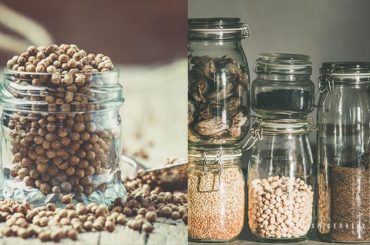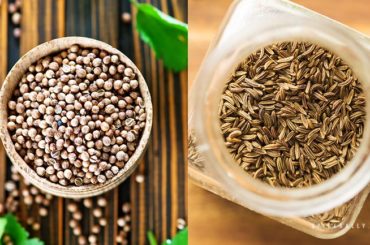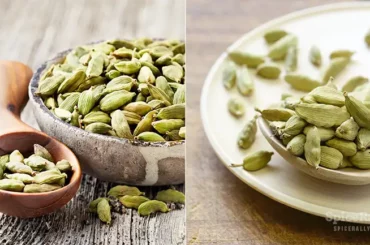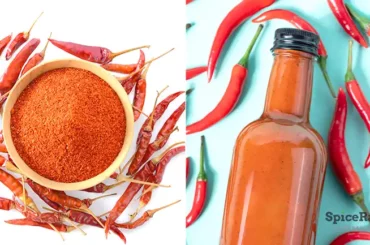Red peppers indeed have a remarkable ability to flavor any bland dish. Just imagine the hotness of the ones that make you cry! Red peppers are an asset to our meals, and there are many varieties that come from the same family. Ranging from sweet, mild to fiery, peppers have become a kitchen staple in many cuisines all over the world.
The difference between cayenne and paprika primarily lies in their consistency and flavor profiles. Cayenne is typically hotter, pungent, and has a strong bite, obtained from cayenne peppers. Whereas the flavor of paprika always depends on the paprika peppers used, and its taste may range from sweet-mild to spicy, unlike cayenne.
We know it sounds really fascinating and now are waiting to learn more about the differences, similarities, and everything that goes between these two bright-red peppers. So, on that note, let us dig into more details about cayenne vs paprika and see what uses you can have from both of them.
Difference Between Cayenne And Paprika
Cooking is all about diversity, mixing, and matching ingredients to bring out all the taste, goodness, and visually pleasing.
In that case, red peppers play a significant role in our kitchen by contributing an excellent taste and color to the food we make.

Likewise, cayenne and paprika are two dried and powdered red peppers that have a bright-red hue. They both look similar but have distinctive flavor profiles comparatively.
Thus, before explaining the differences each of them possesses, let us bring you briefly about the cayenne and paprika individually.
Things To Know About Cayenne Pepper
Cayenne pepper powder is a scarlet-red powder with a hot bite. It is typically obtained from dried peppers of the Capsicum annuum plant, which is closely correlated to jalapeños and chili peppers. And, the fresh cayenne peppers are generally dried and pulverized to make the powdered Cayenne powder.
Generally, this spice goes well with spice or savory recipes that call in for an extra punch. The spiciness comes from their natural and active compound, capsaicin.
Cayenne peppers are relatively hot and have a significance going up and down between 30,000 – 50,000 Scoville Heat Units (SHU) on the Scoville Scale. Furthermore, cayenne peppers are almost ten times spicier than jalapeno peppers. In fact, this spice is obtainable mainly on the market as a finely ground powder.
Usually, fresh cayenne peppers are 10 to 25 cm long, skinny, and radiant red-colored. They have a tapering shape, a bent tip, and fairly splashed skin.
The name cayenne derives from the city of Cayenne in French Guinea, from where the pepper first comes from. In addition, this flavoring is a staple in Creole, Mexican, and Cajun cuisines. And, if you visit Korean, Indian, and other Asian cuisines, you will find cayenne pepper in many of their dishes too.
What Is Paprika
Paprika is a versatile spice with a slightly nuanced flavor profile. In fact, you cannot say the taste of paprika at once without tasting them since the flavors would range from sweet, mild, to hot depending on the peppers used.
Just like cayenne pepper, paprika, too, comes from the Capsicum annuum plant that belongs to the same family of peppers.
Basically, there are two heartlands for paprika- Spain and Hungary. The Spanish paprika, or popularly known as pimento, is used to make a well-known paprika variety- smoked paprika.
Like cayenne, paprika is dried and pulverized to obtain a fine powder. The flavors of paprika powder solely depend on the type of peppers used. Sweet peppers give sweet-flavored paprika, mild peppers will give delicately-flavored paprika, and hot types would make spicier paprika, respectively.
However, smoked paprika has a totally different flavor profile. It may be mild or spicier, but at the same time, all of them give a distinguishing smokiness when added to food.
Overall, paprika scores range from 250 – 1000 SHU on the Scoville Heat Scale and are typically considered a pepper variety that is not very hot.
Cayenne Vs Paprika- What Is The Real Difference
So, as explained on top, paprika and cayenne come from the same family, Capsicum, but with totally different flavors. Plus, they have different heat levels on the Scoville Heat Scale, which predicts that their spiciness is also distinct.
So, refer to the table below to get a clear idea about the differences between cayenne pepper and paprika.
| Cayenne Pepper | Paprika |
| A red spice powder, with typically has a hot flavor that is obtained by drying and pulverizing the peppers from the Capsicum annuum plant. | A red spice powder with flavors ranging from sweet, mild to spicy depending on the peppers used that are obtained from the Capsicum annuum plant. They are generally dried and pulverized to make a fine powder. |
| There is only one specific variety of cayenne peppers. | Has several varieties depending on the taste as sweet paprika, mild paprika, and hot paprika. |
| Scores from about 30,000 – 50,000 Scoville Heat Units on the Scoville Heat Scale. | Scores from approximately 250- 1000 Scoville Heat Units on the Scoville Heat Scale. |
| Hotter than paprika. | Not as spicy or fiery as cayenne pepper. |
| It does not have a fruity, sweet, or smoky flavor. | Some types of paprika are fruity, sweet, and smoked paprika has a unique smoky flavor. |
| Rich in Vitamin C, Vitamin B6, Manganese and Folate. | A rich source of Vitamin A, Copper, Fiber, Vitamin B2, and Zinc. |
Can Cayenne Be Substituted With Paprika And Vice Versa?
Well, this is something that you should thoroughly know when you are cooking. Since none of us are born good cooks, it all comes with time and practice. Thus, in order to master cooking, we should be well aware of the substitutes, particularly when it comes to spices and other flavorings.
So, when talking in terms of cayenne pepper and paprika, we cannot actually say that paprika could be replaced with cayenne and vice versa. The reason for this is, as we discussed through the sections above, paprika has a subtle flavor profile ranging from sweet, mild, to spicy, whereas cayenne comes with a basic hot profile.
Therefore, substituting it with cayenne cannot be a good idea when a certain recipe calls for sweet paprika or smoked paprika in particular. In fact, depending on the results on the Scoville Heat scale, cayenne is comparatively hotter than any type of paprika. And therefore, the replacements could ultimately result in major flavor twists in your dish.
The same thing could go the other way round. If you try to substitute paprika in a recipe that calls for cayenne, you will have to expect similar taste twists, although it could give you the color you desire.
However, you can take the chance to use hot paprika in places of cayenne if you don’t have it. It may not give as much spiciness that cayenne would provide. But still, it could be a good alternative if you ever run out of cayenne in your kitchen.
So, in a nutshell, the best option you have is to use the exact pepper powder depending on the recipe if you don’t want to change the taste of your dish.
The Peppery Conclusion
Cayenne and paprika both can be great additives in your dishes, basically with regard to the flavor, color, and texture.
They both come from the same family and the same plant, Capsicum annum, but with different consistency and flavor profiles. Although they both are dried red pepper powders that could provide the same color, they may give distinctive tastes when added to foods.
However, cayenne and paprika can both be incorporated into a particular dish together to enhance the flavor and color. But, substituting them with each other should be a well-thought decision since it could affect the taste of your meals.




